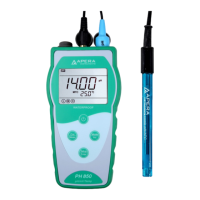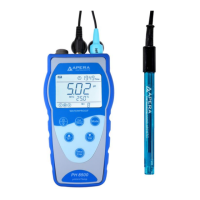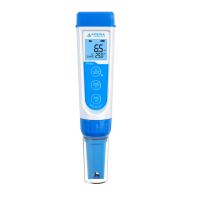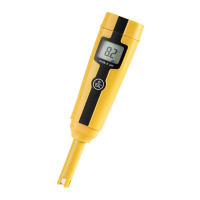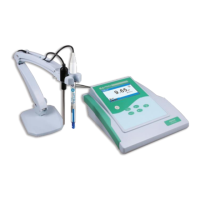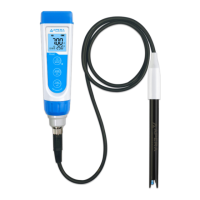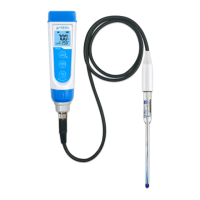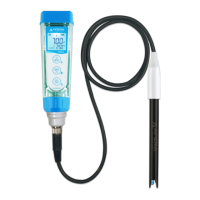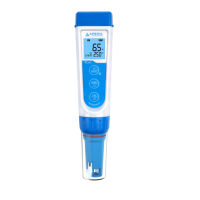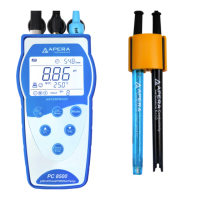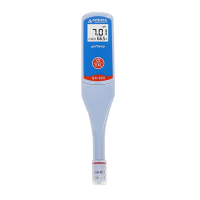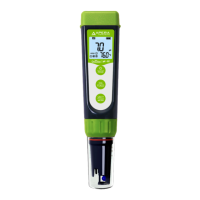6.2 Notes on ORP measurement
6.2.1 ORP measurement does not require calibration. When the user is not sure about ORP
electrode quality or measuring value, use ORP standard solution to test mV value and see whether
ORP electrode or meter works properly. Table-8 is the data of standard ORP solution for 222 mV.
Table-8 ORP Standard Buffer Solution(222mV±15mV,25℃)
6.2.2 Clean and activate ORP electrode
After the electrode has been used over a long period of time, the platinum surface will get polluted
which causes inaccurate measurement and slow response. Please refer to the following methods
to clean and activate ORP electrode:
(a) For inorganic pollutant, submerge the electrode in 0.1mol/L dilute hydrochloric acid for 30
minutes, then wash it in distilled water, then submerge it in the soaking solution for 6 hours.
(b) For organic or lipid pollutant, clean the platinum surface with detergent, then wash it in distilled
water, then submerge it in the soaking solution for 6 hours.
(c) For heavily polluted platinum surface on which there is oxidation film, polish the platinum surface
with toothpaste, then wash it in distilled water, then submerge it in the soaking solution for 6 hours.
7 CONDUCTIVITY MEASURE MENT
7.1 Set up flexible Electrode Holder (refer to 4.1)
7.2 Information regarding the Conductivity Electrode
7.2.1 Conductivity electrode
EC800 and PC800 are equipped with model 2301T-F plastic conductivity electrode with constant
K=1.0 and a built-in temperature sensor, which allows for automatic temperature compensation. The
electrode housing is POM plastic which is corrosion resistant and impact resistant. When submerge
the conductivity electrode in solution, stir the solution briefly to eliminate the air bubbles and improve
response and stability.
7.2.2 Conductivity electrode constant
The meter matches conductivity electrodes of three constants: K=0.1, K=1.0 and K=10.0. Please
refer to table-9 for measuring range. Set constant in parameter setting P2.1 and refer to clause 8.4
